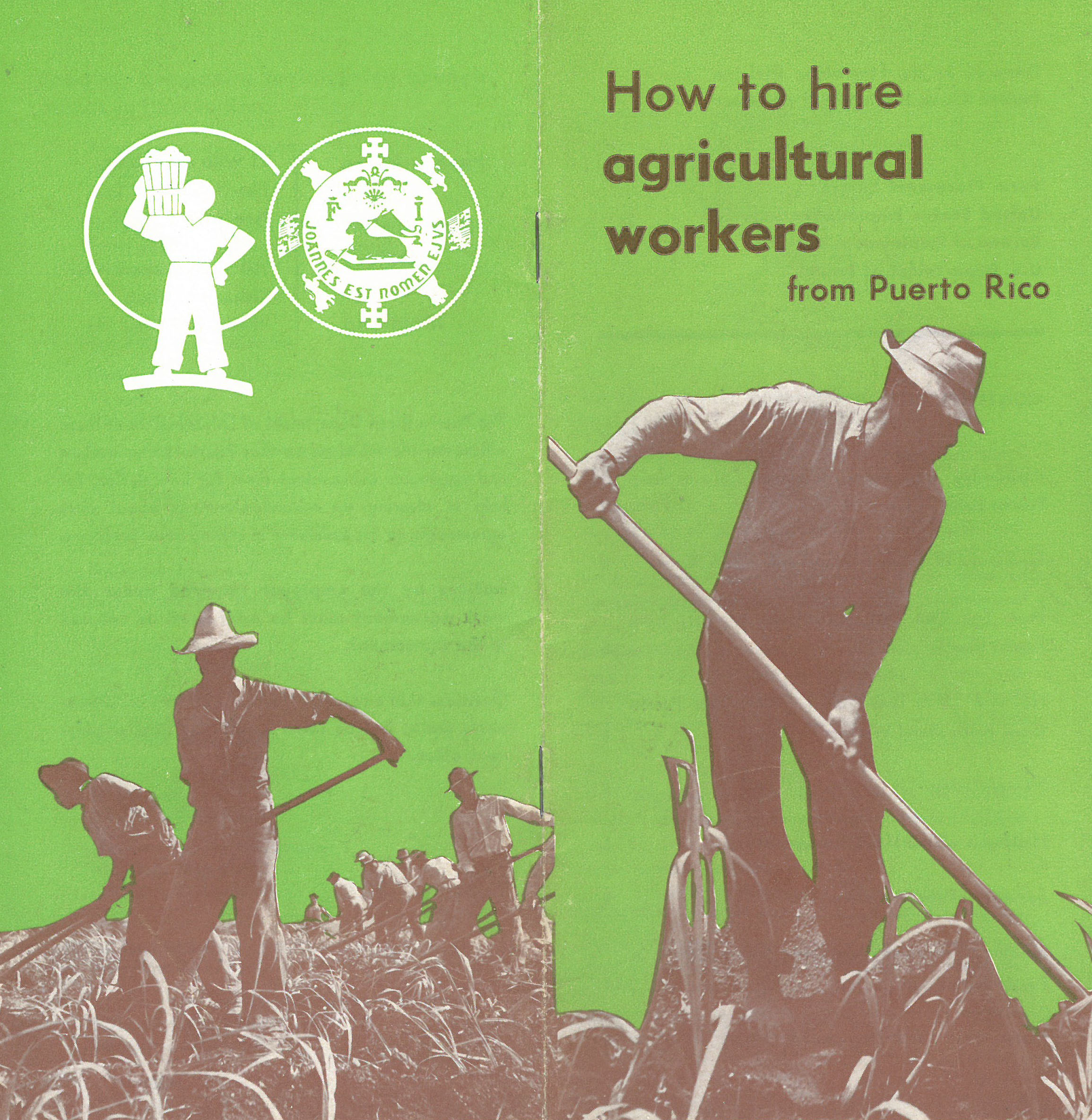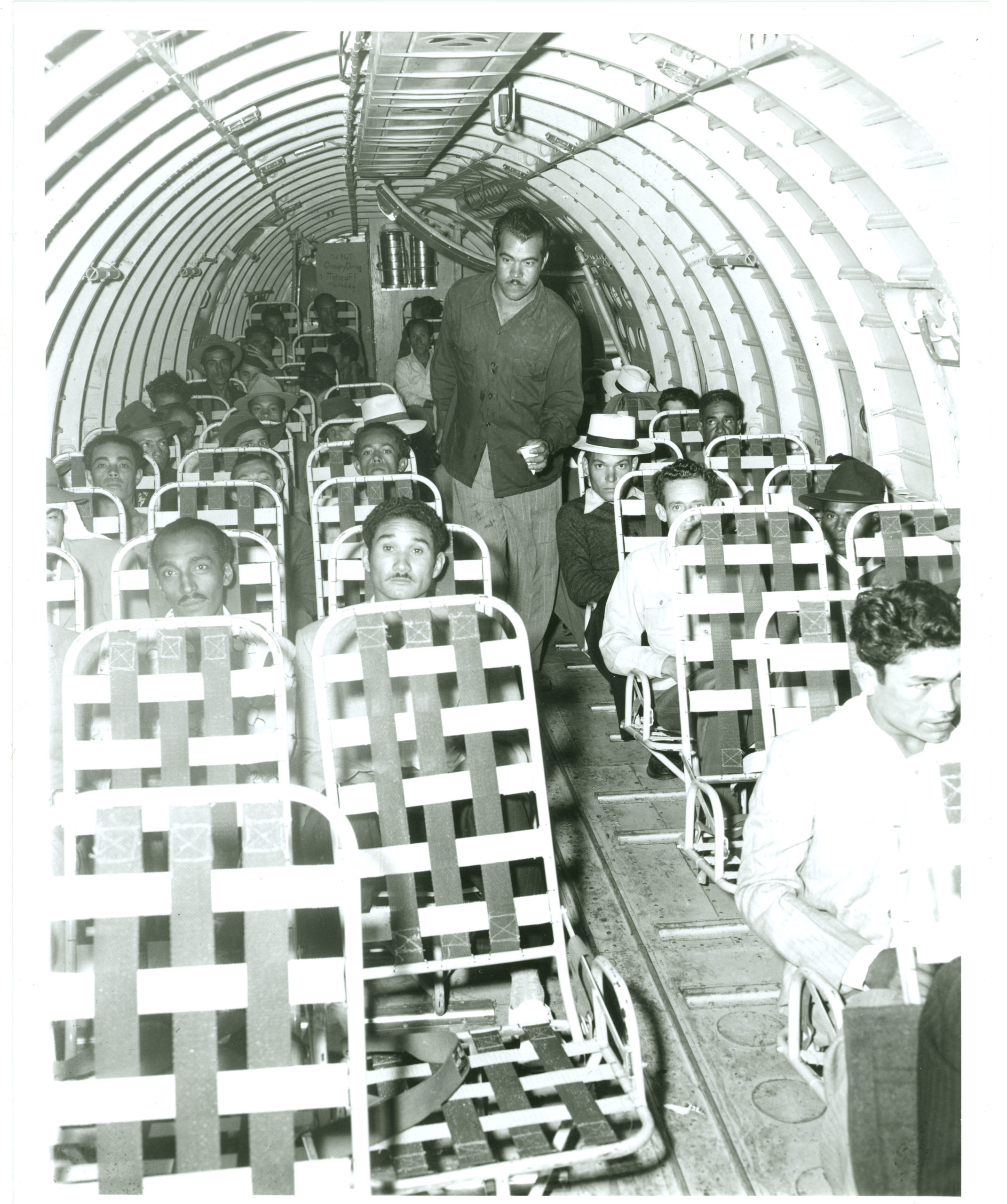Elena Marie Rosario, M.A.
Ph.D. Candidate in History, University of Michigan
TEACHER'S SNAPSHOT
Subjects:
Agriculture, Economics, Labor, Latina/o Studies, Migration, Puerto Ricans
Course Topics/Big Ideas:
Cultural Diversity and Connecticut State Identity, Role of Connecticut in U.S. History
Grade:
High School
Lesson Plan Notes
Puerto Rican farm labor migration was the product of both the Puerto Rican and American governments. While there were Puerto Ricans in the state before World War II, May 1952 marked the beginning of a significant increase in Puerto Rican migration. The first group of Puerto Rican farmworkers came to work in Connecticut’s tobacco fields as contracted laborers through Connecticut’s Shade Tobacco Growers’ Agricultural Association. In Connecticut, Puerto Ricans joined a workforce of over 20,000 that labored in the tobacco industry. The number of Puerto Rican migrants to the United States increased over the next several decades, leading to the emergence of Puerto Rican communities across the United States, including in Connecticut.
ESSENTIAL QUESTION
SUPPORTING QUESTIONS
- Why did Puerto Ricans migrate to Connecticut in large numbers after World War II?
- What was the impact of the tobacco industry on the racial and ethnic makeup of Connecticut?
- Why did the government of Puerto Rico lobby for Puerto Ricans to work as migrant farmworkers?
ACTIVITY
1. Begin the class with the following discussion questions:
- What is migration?
- What is immigration?
- What are some of the reasons people migrate today?
- What are the reasons people migrated in the past?
2. As a class, come up with definitions for migration and immigration and give 2-3 examples for each term to guide the lesson.
3. Read the newspaper article (source #1) and take detailed notes:
- What type of source is this?
- What is the purpose of this piece?
- What is the tone?
- What information can you glean from this source?
4. Look at the image (source #3) and answer the following questions in pairs:
- What do you think is going on in the image?
- What questions do you have about the image?
5. Break the class into three groups. Each group will read three sections in the pamphlet (source #2):
- Group 1: pages 3-5
- Group 2: pages 6-8
- Group 3: pages 9-13
Each group will discuss the following questions:
- Who is the audience?
- What are some of the main points presented in your sections?
- What information can you glean from this source about Puerto Rican farm labor migration?
- What are your other observations and thoughts?
6. As a class, compare and contrast the sources:
- Do these sources challenge or reinforce each other?
- What different perspectives do the sources illustrate?
- What do these sources collectively reveal about the past?
- How do these sources affect your perception of the present?
7. Closing Discussion: Students will discuss why Puerto Ricans are migrants (and not immigrants) when they leave Puerto Rico to live and work in the mainland United States and what the importance of that differentiation is.
OPPORTUNITIES FOR ASSESSMENT
- Students will write a letter to the editor in response to the newspaper article “Puerto Rican Farm Workers Chosen With Extreme Care.” What questions do you have for the author? What new information can you provide?
- Students will create recruitment material from the perspective of tobacco growers or associations to attract potential migrant laborers.
- Students will investigate Connecticut’s tobacco industry today and create an exhibit for the Luddy/Taylor Connecticut Valley Tobacco Museum.
RESOURCE TOOL KIT
“Puerto Rican Farm Workers Chosen With Extreme Care.” May 18, 1952, The Hartford Courant, pg. 23.

“How to Hire Agricultural Workers from Puerto Rico, 1951.” Ralph C. Lasbury, Jr. Collection: The Shade Tobacco Growers Agricultural Association Files: 1943-1966. Windsor Historical Society, Windsor, Connecticut.
ADDITIONAL RESOURCES
Places to GO
Windsor Historical Society, Windsor, CT
Connecticut Valley Tobacco Museum, Windsor, CT
Hartford History Center, Hartford Public Library, Hartford, CT
Connecticut Museum of Culture and History, Hartford, CT
Things To DO
Explore the Ralph C. Lasbury Jr. Collection: The Shade Tobacco Growers Agricultural Association Files, 1943-1966 at the Windsor Historical Society research library in Windsor, CT.
Watch the “Introduction to Connecticut’s Tobacco Valley” video clip, co-produced by CPTV and Connecticut Humanities.
Websites to VISIT
“Puerto Rican Migrant Farmworkers: Enduring Experiences in Continental U.S. Agriculture” online exhibit by Dr. Ismael García Colón
Articles to READ
ConnecticutHistory.org:
- “Windsor Tobacco: Made in the Shade”
- “Cash Crop: L.B. Haas & Co. and the History of Tobacco in Connecticut” by Ben Gammell for Your Public Media
- “Laboring in the Shade” by Dawn Byron Hutchins for Connecticut Explored
Duany, Jorge. “A Transnational Colonial Migration: Puerto Rico’s Farm Labor Program.” 304 New West Indian Guide / Nieuwe West-Indische Gids 84, no. 3–4 (January 1, 2010): 225–51.
Glasser, Ruth. “Tobacco Valley: Puerto Rican Farm Workers in Connecticut.” Hog River Journal 1, no. 1 (Fall 2002).
Glasser, Ruth. Aquí Me Quedo: Puerto Ricans in Connecticut/ Puertorriqueños en Connecticut. Connecticut Humanities Council, 1997.
Fernández, Lilia. “Of Immigrants and Migrants: Mexican and Puerto Rican Labor Migration in Comparative Perspective, 1942–1964.” Journal of American Ethnic History 29, no. 3, (Spring 2010): 6–39.
Maldonado, Edwin. “Contract Labor and the Origins of Puerto Rican Communities in the United States.” The International Migration Review 13, no. 1 (1979): 103-21.




